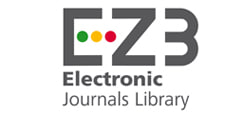Abstract
Candida albicans, Aspergillus fumigatus, and Cryptococcus neoformans are the invasive fungi whose diseases are becoming a growing health issue in the global community, particularly in immunocompromised people. The increasing resistance of the conventional antifungals and the shortage of the existing treatment methods require alternative methods. The present review is an evaluation of the antifungal activity of metal-based nanoparticles, including silver (Ag), copper (Cu), zinc oxide (ZnO), titanium dioxide (TiO2), and selenium (Se) in relation to the three predominant pathogenic fungi. It also talks about their mode of action, relative efficacy, toxicity and their possible future clinical use. Multimodal effects of metal nanoparticles are reactive oxygen species (ROS) formation, membrane destabilization, and enzyme inhibition, and biofilm disruption. Silver and zinc oxide nanoparticles are very effective against C. albicans particularly in biofilm-associated infections. Copper and titanium dioxide nanoparticles also work against A. fumigatus and selenium nanoparticles have been encouraging against C. neoformans including blood-brain barrier penetration. Toxicity comparison reveals variations, with ZnO and TiO2 demonstrating favorable biocompatibility. Metal nanoparticles can serve as effective alternatives to traditional antifungal agents, particularly for drug-resistant and biofilm-associated infections. Their physicochemical versatility and ability to target various fungal structures favor their potential integration into next-generation antifungal strategies, pending further optimization to ensure safety and regulatory approval.
Recommended Citation
Imran, Ahmed Falah; Saeed, Hayder Hameed; and Mohammed, Khaldoon Jasim
(2025),
Comparison of Metal Nanoparticles as Antifungal Agents: Efficacy, Mechanisms, and Toxicity against Candida, Aspergillus, and Cryptococcus,
AUIQ Complementary Biological System: Vol. 2:
Iss.
3, 40-53.
DOI: https://doi.org/10.70176/3007-973X.1044
Available at:
https://acbs.alayen.edu.iq/journal/vol2/iss3/5
Digital Object Identifier (DOI)
10.70176/3007-973X.1044


















Follow us: